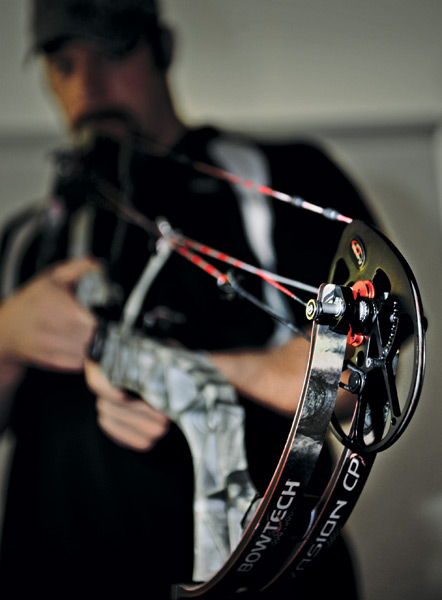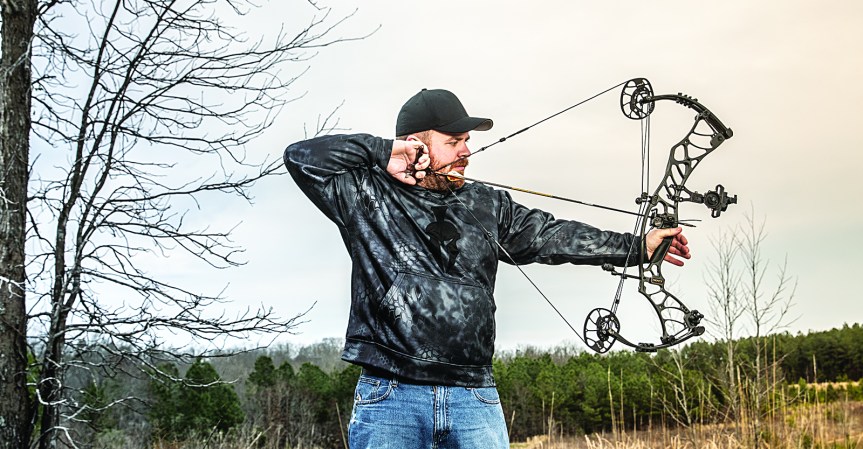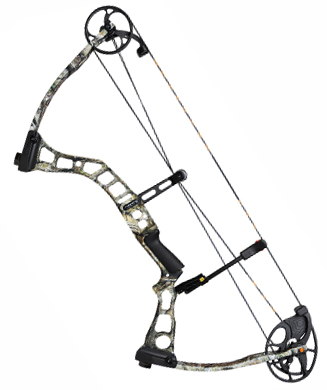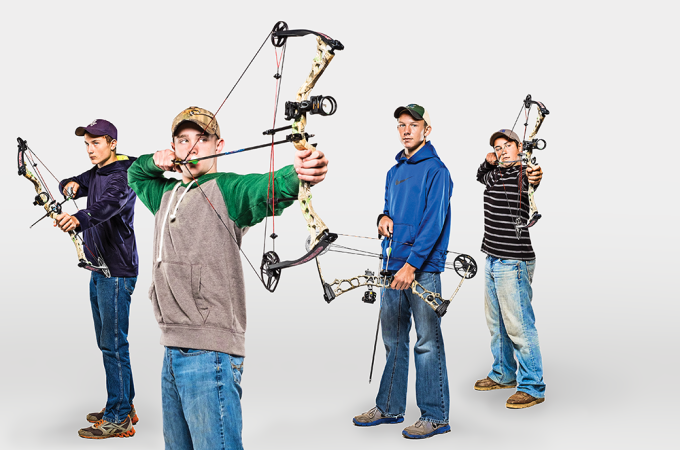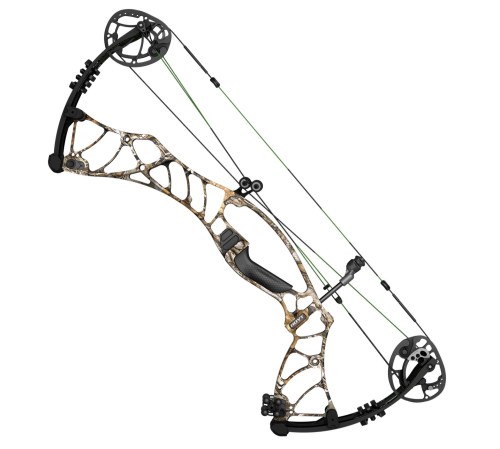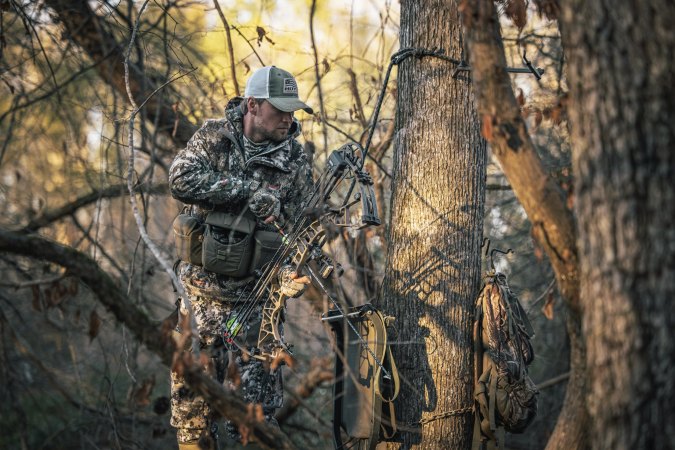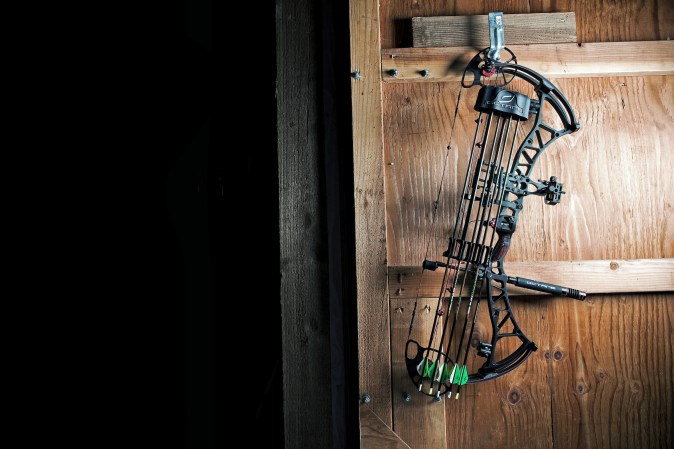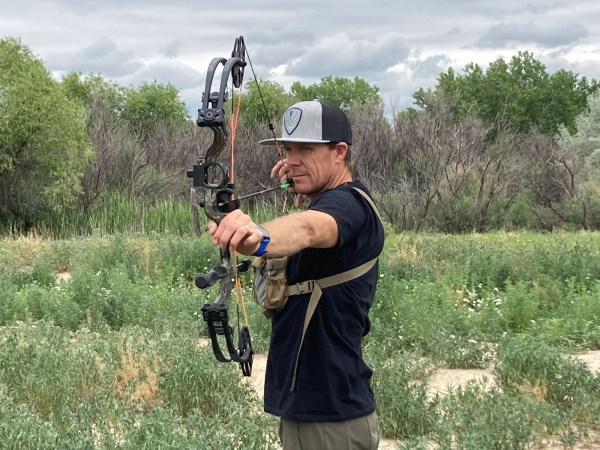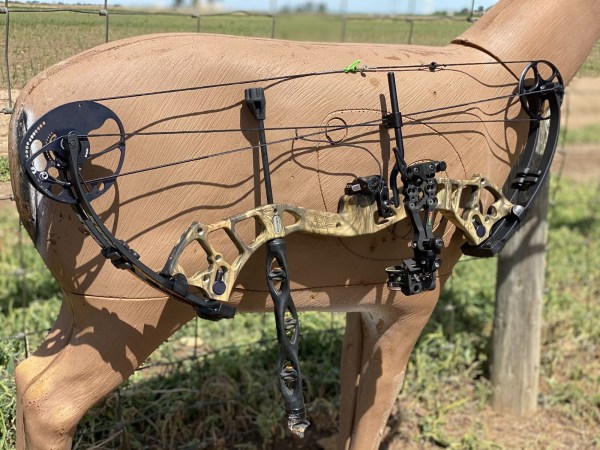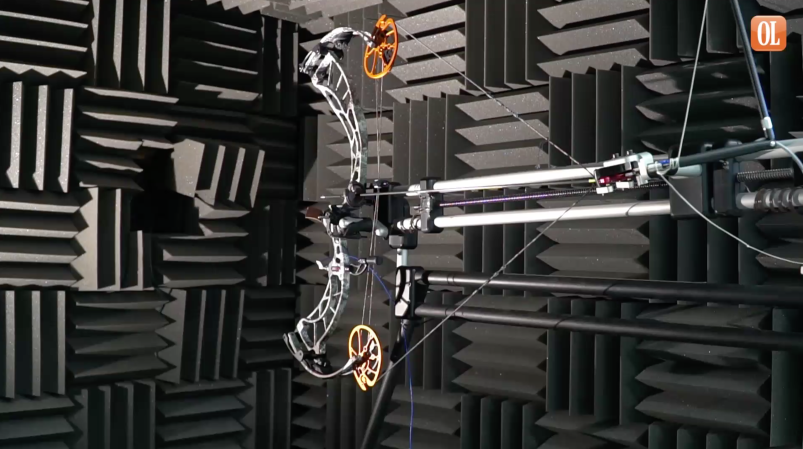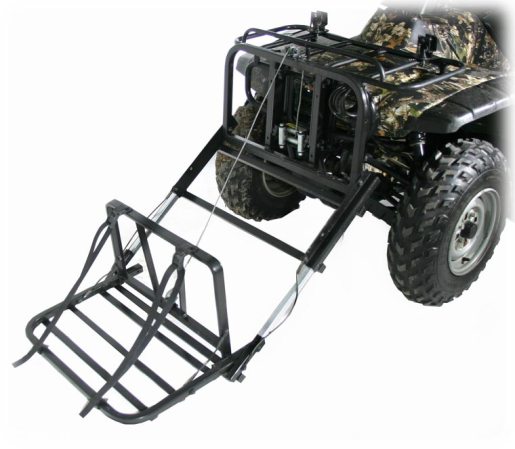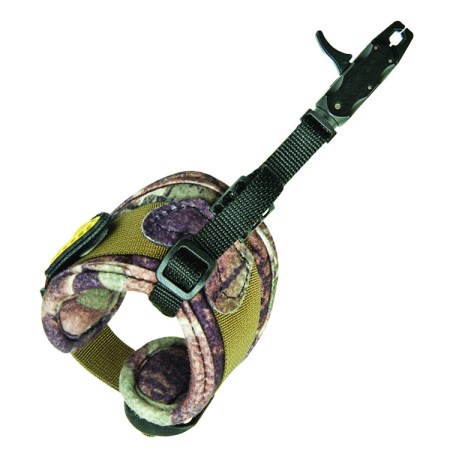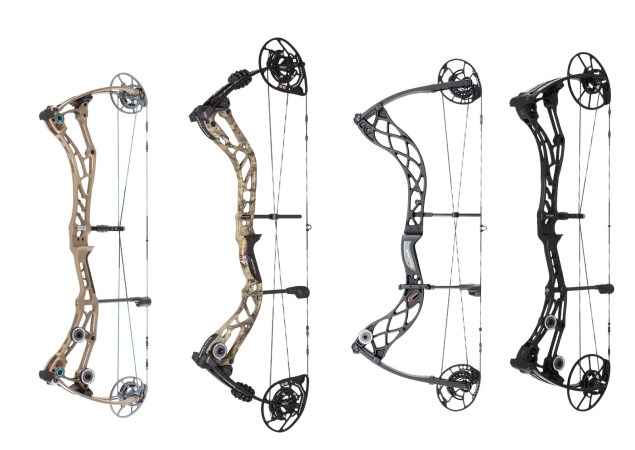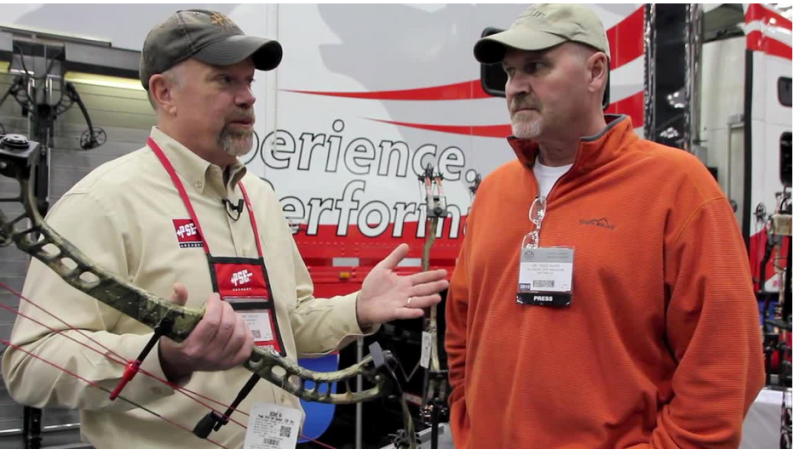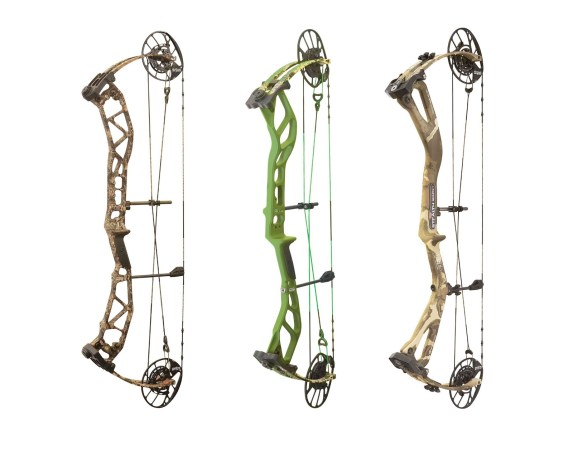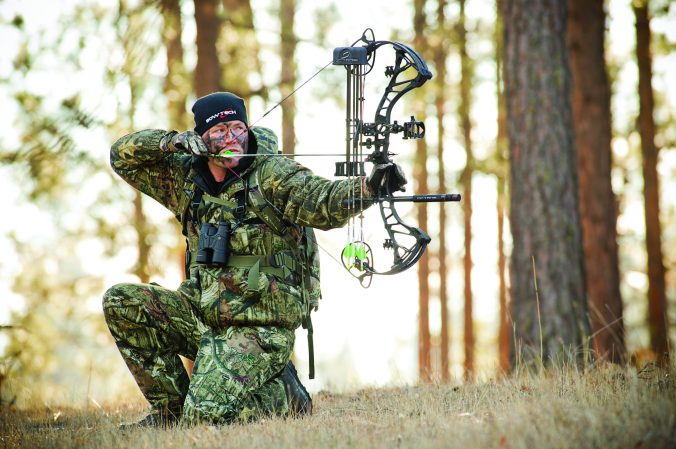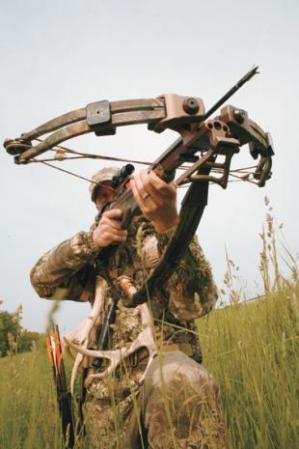We may earn revenue from the products available on this page and participate in affiliate programs. Learn More ›

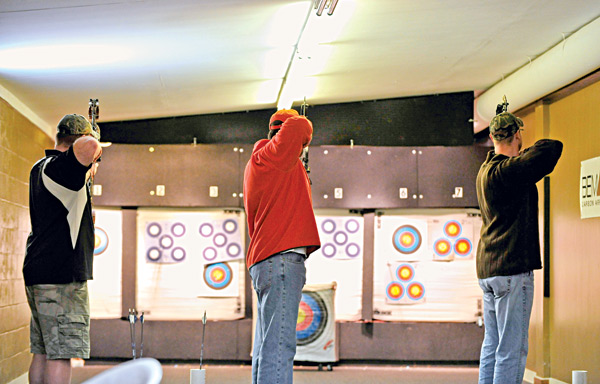
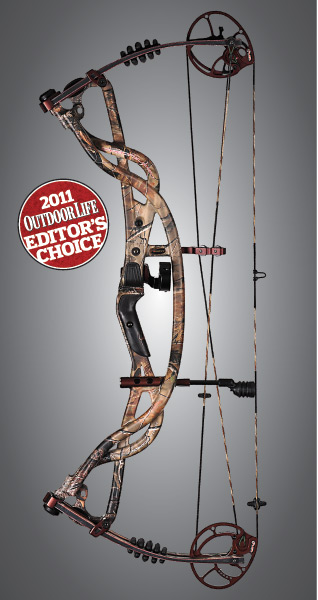
Speed: 321 fps
Noise: 86.3 dBA
Vibration: 16.34 m/s2 The Carbon Element is a shorter version of last year's Matrix. At 32 inches axle-to-axle, the Element tips the scales at just 3 pounds 11.8 ounces–simply amazing. Even more impressive, it zipped arrows downrange at 321 fps, while registering a scant 16.34 m/s2 of vibration. That translates into truly shock-free arrow delivery. And at 86.3 dBA, the Element is pin-drop quiet. Three hollow carbon tubes anchor the bow's design, providing an incredible strength-to-weight ratio. Amenities abound–squeaky-clean limb pockets, an offset stabilizer mount (to improve balance), a padded arrow shelf and the most innovative roller guard we've ever seen. The draw cycle is silky smooth, and Hoyt's trademark cam-and-a-half power plant syncs the split limbs–casting arrows with sublime comfort. [ $1,199; hoyt.com ]
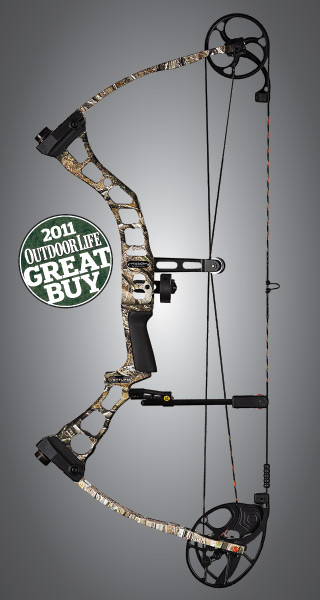
Speed: 323 fps
Noise: 92.6 dBA
Vibration: 21.56 m/s2 The Venture continues along the lines that have built the Mission company: high-end, feature-packed bows at incredible prices. The Venture launches arrows at a 323 fps clip, while retaining its attractive figure with a weight of 4 pounds 3.8 ounces. The short 30 1⁄4-inch axle-to-axle length offers a substantial 7 1⁄8 -inch brace height for cat-like handling. However, at 92.6 dBA, the Venture has some hiss (loudest in the test). The Zebra Hybrid string is an unexpected pleasure, as is the machined double roller guard. Dual string suppressors and a dead-end string stop soaked up unwanted vibes. The fully machined riser is yet another top-end feature on a bow with a bargain price tag. A composite grip and limb pockets are the only areas where we could find room for improvement. [ $499; missionarchery.com ]
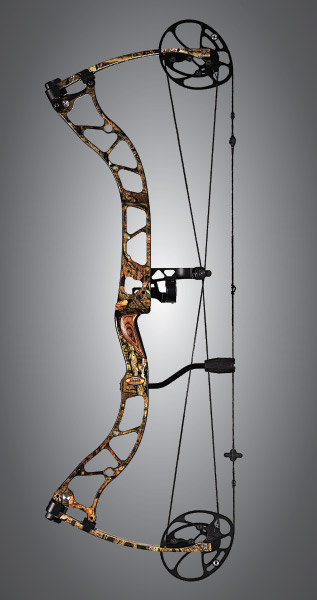
Speed: 320 fps
Noise: 88.8 dBA
Vibration: 26.2 m/s2 The 32-inch Stealth II registered 320 fps–hot enough to catch up with anything you level your pins on. At 88.8 dBA, the Stealth fell into the middle of the field for noise, while producing a moderate amount of vibration. The Stealth was the second-heaviest bow in the field at 4 pounds 10.6 ounces. We liked the two-piece X1 limb pockets and split limbs, which combine to form an exceptionally clean and tidy system. A 6 1⁄4-inch brace height offers a good compromise between speed and forgiveness in the bow. The handsome burled grip drew mixed reviews; half the panel loved it, while the other half weren't as thrilled. Draw length adjustments are made in half-inch increments, and the Stealth is available in draw lengths up to 30 1⁄2 inches. [ $849; benpearson.com ]
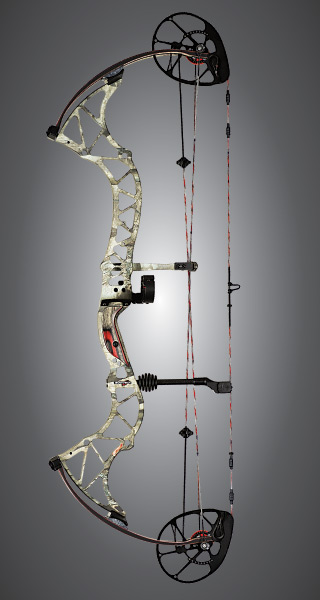
Speed: 331 fps
Noise: 89.6 dBA
Vibration: 17.5 m/s2 The Invasion impressed with its seductive styling and creative engineering. Pillow bearings mounted on top of the limbs hold the eccentrics steadfast, eliminating the need for drilled axle holes and their often suspect alignment. BowTech's binary cam system delivers the horses to the split limbs, which blistered arrows at 331 fps (good for second-fastest). The Invasion is stingy on vibration, eking out a thin 17.46 m/s2 of vibration and 89.6 dBA of noise. The design is robust, yet the Invasion was the field's third-lightest bow. The flexible cable guard reduces torque, while a 7-inch brace height promises crowded arrow groups. The camo dip needs some attention, as it stretches oddly on the riser, but this was the only design drawback we could find. The two-piece wood grip is a great throttle, and the Octane strings are as refined as they come. [ $949; bowtecharchery.com ]
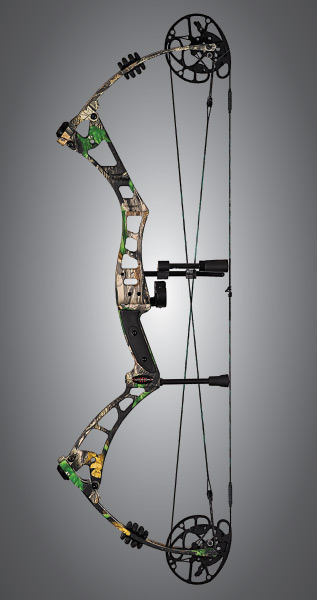
Speed: 330 fps
Noise: 88.6 dBA
Vibration: 13.3 m/s2 The DS-3800 impressed on many levels; it was third-fastest (330 fps), while registering the least amount of vibration (13.3 m/s2). This bow is as shock-free as you'll find. The bow has a buttery draw, transferring energy into a fluid shot. The bent cable guard minimizes cam lean; however, the cables tend to settle slightly inside the sight window. The bow is quiet (88.6 dBA) for a compound muscling out 330 fps. The 6-inch brace height wasn't as finicky as that of other short-brace-height bows we've tested. A BCY-452 string will impress the harshest of critics. Split limbs with laminated skins were a visual delight, and the molded soft-rubber grip is the right remedy for ungloved paws on chilly mornings. A limited lifetime warranty seals the deal on this impressive package. [ $830; dartonarchery.com ]
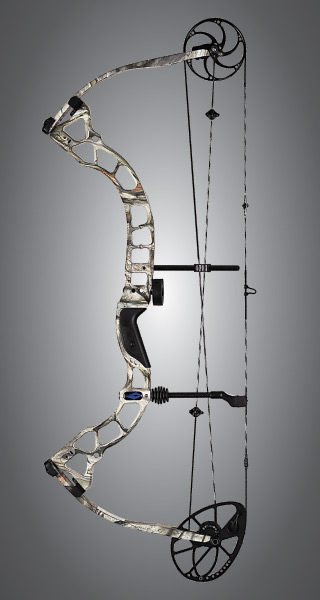
Speed: 315 fps
Noise: 90.8 dBA
Vibration: 35.5 m/s2 The cost-conscious Outlaw ships with a four-pin sight, arrow rest, five-arrow quiver, wrist sling, alloy peep sight and 5-inch stabilizer, lending to its considerable value. The bow boasts one-cam eccentrics–arguably the best cam option for fuss-free shooting. Unique to the Diamond, cam bearings are placed on the ends of the limbs, which, according to the company, equalizes the tensions in the string and cables, eliminating string creep. A "throttle cam" provides the power, propelling arrows at 315 fps. The 32-inch-axle-to-axle Diamond has a fat 7-inch brace height, which provides relief for shooters whose form isn't quite up to snuff. This lightweight Outlaw (3 pounds 14.2 ounces) barked a bit at 90.8 dBA (second-loudest), and recorded the most vibration in the group. [ $549; diamondarchery.com ]
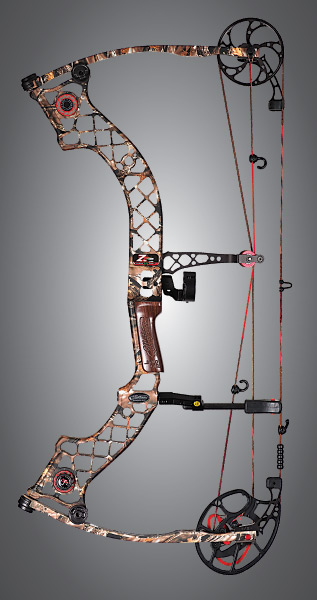
Speed: 315 fps
Noise: 88.2 dBA
Vibration: 15.09 m/s2 At an unimaginably short 28 inches from stem to stern, the Z7 was the most compact bow in the test. The cavernous 7 3⁄8-inch brace height is well suited for cramped confines, where space is minimal and accuracy is essential. Mathews' signature quality is evident throughout. The draw is slick, and the Z7 nestles confidently in hand. The downside of such a short bow is the acute string angle, which pitches the head forward when anchoring. At 4 pounds 7.2 ounces, the bow isn't light; however, it handles with surprising agility. A quality string stop and suppressors squelch vibration to a minuscule 15.09 m/s2. Hand shock was noticeably absent, and at 88.2 dBA, the Z7 is practically mute (second-quietest.) However, with a speed reading of 315 fps (tied for slowest), the Z7 Xtreme lost points on speed. [ $899; mathewsinc.com ]
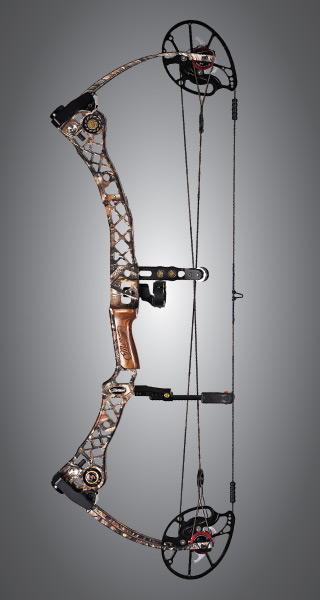
Speed: 329 fps
Noise: 90.2 dBA
Vibration: 22.02 m/s2 Billed as a speed bow with a forgiving 7-inch brace height, the 33-inch MR7 is compact. Our bow pushed the chronograph to 329 fps (third-best), with a very equitable draw cycle. At 90.2 dBA, this Monster grumbles a bit, but not to a point of distraction. At 4 pounds 12.6 ounces and generating 22.02 m/s2 of vibration, the MR7 handles well, balancing almost neutrally when gripped and during follow-through. The McPherson comes loaded with top-shelf accessories you'd expect on a Mathews (its parent company). A double-damper roller guard, string stop and harmonic damping system keep vibration in check. The Advanced Vectoring System is unique to the McPherson Series twin cams, with oversize off-center bearings synchronizing the cams for crisp timing. [ $999; mathewsinc.com ]
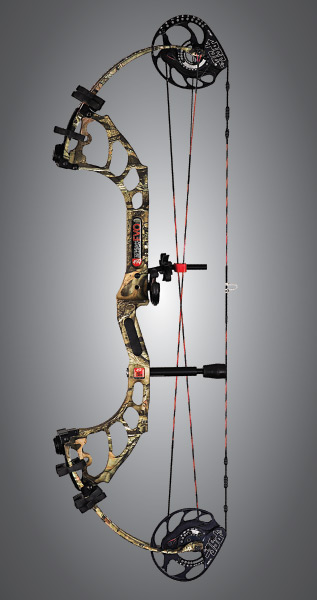
Speed: 334 fps
Noise: 89 dBA
Vibration: 23.8 m/s2 PSE engineers continue to churn out some of the best-performing bows in the industry. The EVO is their latest hybrid, built on the exceedingly popular X-Force chassis. The EVO's pull is effortlessly supple, yet the bow rattles the rafters with a screaming 334 fps (at 75 percent let-off). The back wall is granite-solid. Half-inch draw length increments (achieved using included inner modules) is sheer genius and a must-have feature for accuracy junkies bent on micro-adjusting their shot sequence. At 4 pounds 8.6 ounces, the EVO was the third-heaviest bow in the field. However, this bow hides its weight well. The slim grip distributes weight along the EVO's length, settling in seamlessly at full-draw. At 32 1⁄2 inches axle-to-axle, and with a 6-inch brace height, this bow should find favor among the faithful. [ $849; pse-archery.com ]
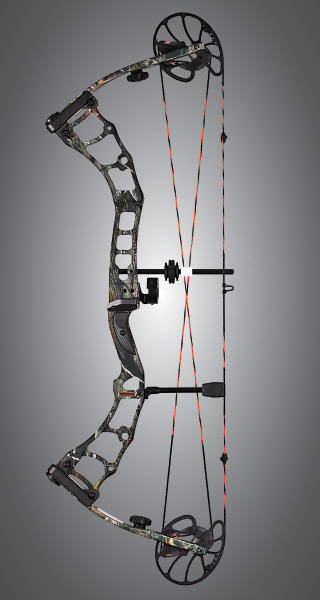
Speed: 318 fps
Noise: 88.7 dBA
Vibration: 19.14 m/s2 The design of the 33 1⁄2-inch-long Crave was the simplest of any bow in the field. Once you have it in hand, you'll notice a distinct lack of peripheral "stuff" other manufacturers hang like ornaments from their bows. The 6 1⁄2-inch brace height offers the forgiveness needed when nerves get the best of a hunter. A two-track, dual-sync cam system propels arrows at 318 fps, while noise registers 88.7 dBA with 19.14 m/s2 of vibration. The faux carbon grip drew mixed reviews. The machined riser features an oversize sight window, which is nice for centering critters in your peep. The draw is a bit harsh, but it settles into a very solid back wall. Winner's Choice Custom string and cables, LimbSaver anti-vibration accessories and a Realtree AP HD dip round out the package. [ $899; rossarchery.com ]
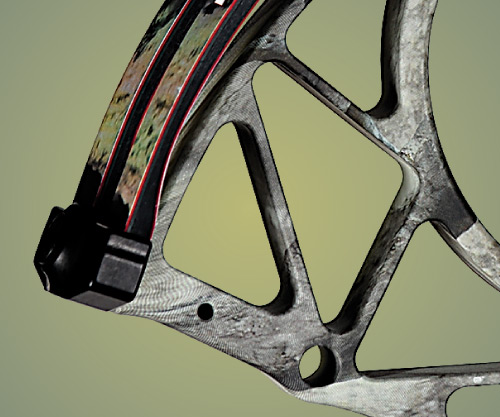
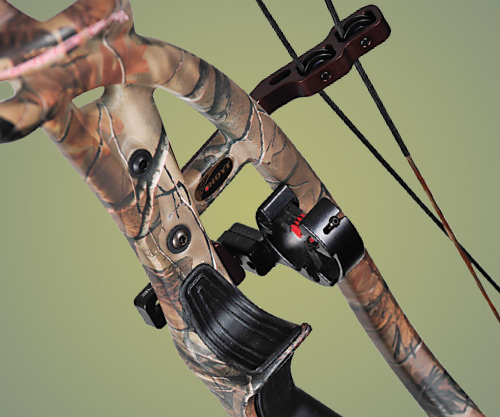
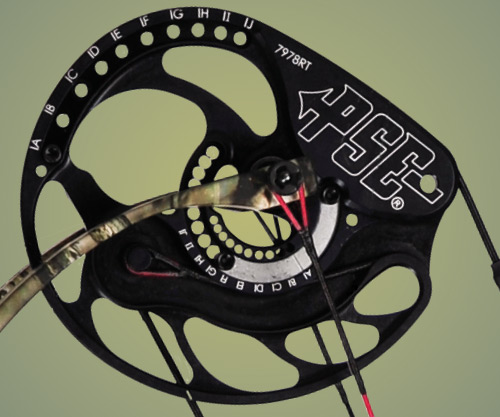
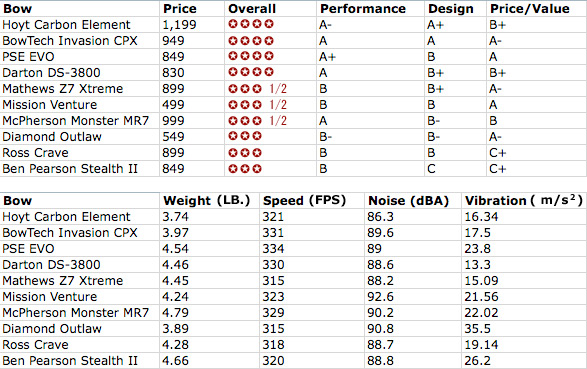
93-96 – A
90-92 – A-
87-89 – B+
83-86 – B
80-82 – B-
77-79 – C+
73-76 – C
70-72 – C- Click here for the 2010 Bow Test
Our team of experts has conducted the most rigorous bow test in the industry. Read the reviews here and take our bow quiz to win the bows that won the test.
